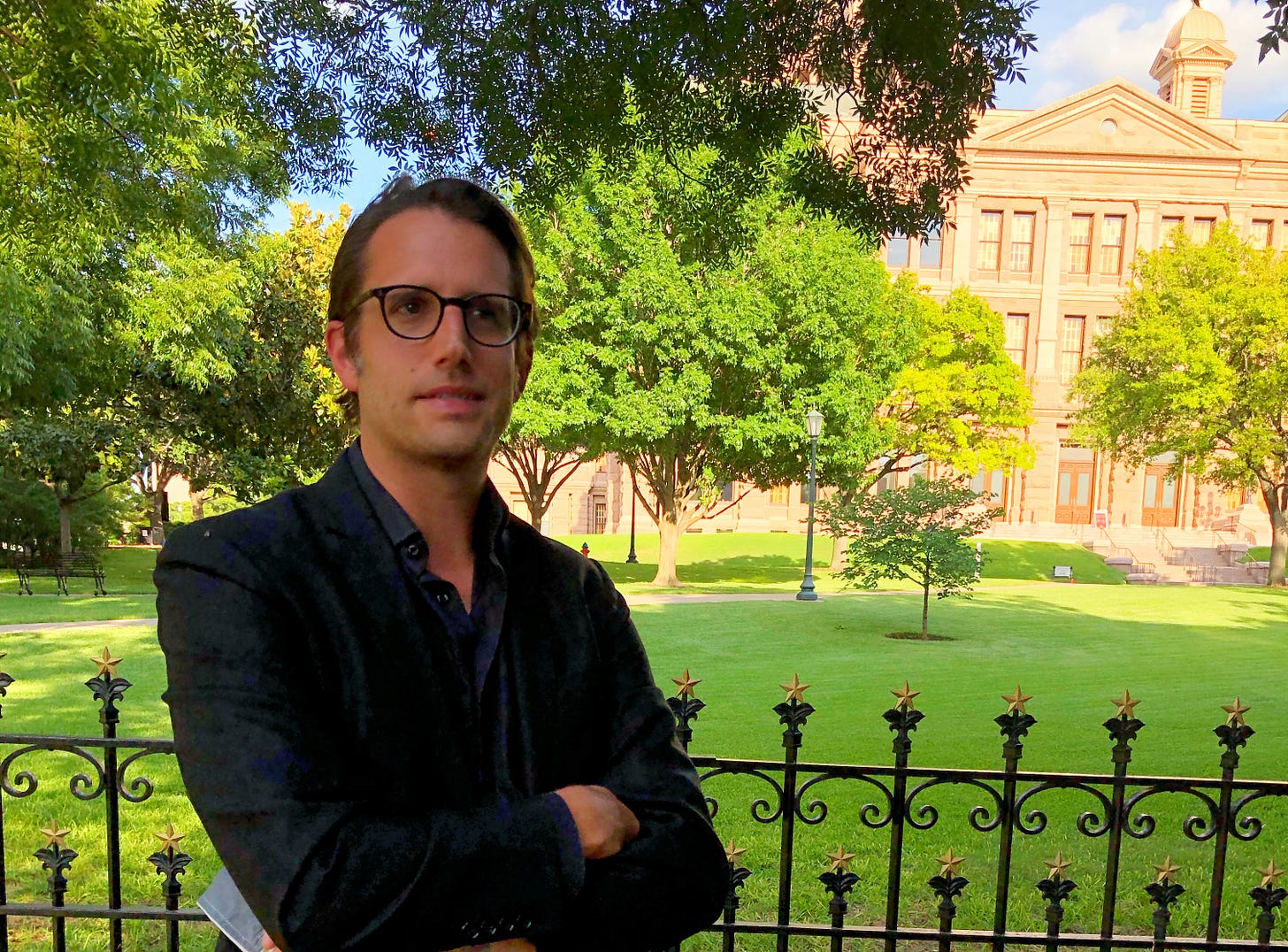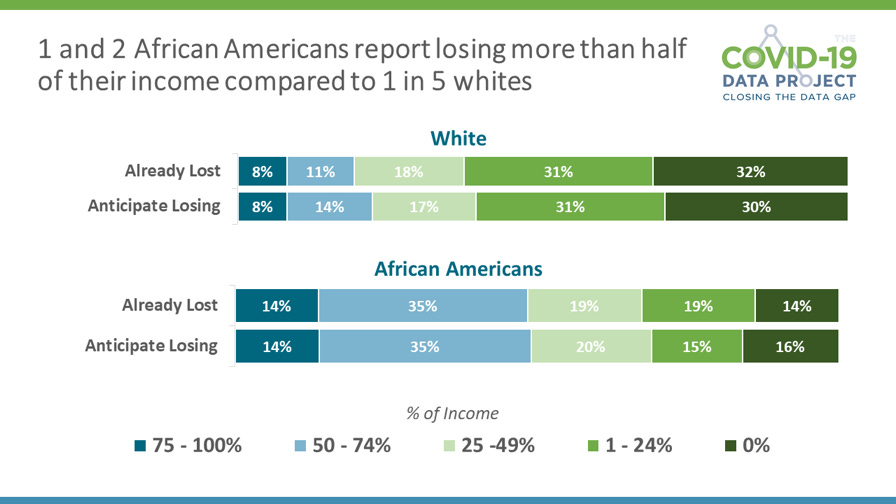Pyramids
Why the Texas capitol is an unsung monument to Black and Hispanic labor
This week Robin Whetstone offers another chapter from her Moscow memoir, Red Ticket, in which we learn the meaning behind that title, and our resident data nerd, Stefan Hankin, shows us how Black Americans and white Americans are experiencing the pandemic in shockingly different ways. And as always, we remember who we’ve lost and offer recommendations on what to do, read, watch, and listen to.
But first, did I ever tell you about my friend Tom?

Tom’s an architect of big things. He designed the Google tower downtown and told me how he partitioned the lobby to create space for the two restaurants by imagining a series of twisted strips of bronze. On his drafting table there was a blank page for a blank space; out of his head he pulled the idea of burnished, curved bronze. He imaged the color, the finish, and how it would put that restaurant over there, and the other restaurant over there so that one could stand in the lobby and see each restaurant while having the sense of that being there and you being here. And in that space — in this idea of “here” he had created — he had then conjured a table with features that recalled the metal that adorned the facade of his tower so that it all seemed of a piece. The power of his imagination to manifest itself to create space and then to fill it up at the same time exceeded my ability to perceive the fullness of it, so I latched onto the one foothold I could find.
“You invented a table?” I asked. Don’t people just go buy tables at a table store?
Tom has taught me how to appreciate how things look in the space we create. He understands at a tradecraft level the table. It does not exist because you found it on Wayfair. Someone somewhere made a choice that it look that way, making design decisions within financial frameworks. So when a draft executive order from the Trump White House mandating that new federal buildings be built in “classical architectural style,” I turned to Tom. He could explain this to me.
“It’s similar to him saying, everyone prefers the elegance and beauty of a 1930 Buick, so all cars moving forward shall share this design language,” he said. Building a classical building requires four times the amount of space and costs what Tom estimates would be about twenty times as much as modern construction. Tom, mercifully, scaled it to my comprehension. Imagine building a 2,000 square foot home that costs $500,000 to build. If you do it in classical style, it would cost $7 million and take eight-ten years to build.
“It’s similar to him saying, everyone prefers the elegance and beauty of a 1930 Buick, so all cars moving forward shall share this design language.”
And then he blew my poor little liberal arts brain to smithereens. “You would have to spend several years training all trades involved in how to construct these buildings,” he said. “We have no craftsmen left who build like this, very, very few architects who could possibly draw the details properly, very few engineers who could calculate this type of construction.”
To show me what he was talking about, we met yesterday, the day before Juneteenth, at the Texas capitol. To me, it’s a big, pink building that houses bad decisions. To Tom, the capitol is time machine to the Italian Renaissance when muscular, Trumpian buildings were contemporary.
The gates to the grounds were locked and guarded by National Guard to prevent the vast green lawns from being used to protest for racial equality, so Tom stood on the sidewalk and directed my attention to the windows, which showed how this is a “style of building that is real, that is built on real columns, real pillars, real structure that supporting what’s going on in this building.”
Tom explained that the way they build buildings now is to start with a frame and then hang things onto that, and that columns and pillars are really just adornments, hollow facades bolted and glued onto steel plates.
“Everything is faked. Everything is applied. It’s called a veneer. You can do detailing that looks similar to this,” he said, gesturing to the series of windows around the west entrance of the capitol, “but it’s gonna be wafer-thin versions of stone, three centimeters thick or something like that, and they’re going to hang it off of a whole structure.”
What Tom sees when he looks at the windows are the ten-foot-tall pilasters, or rectangular columns, holding the building up. The massive stones, carved, shaped, and finished by hand, contribute to supporting the interdependent structure of this massive building all the way up to the Goddess of Liberty atop the pink dome. It’s like seeing an ancient log home build without nails except on a triumphalist scale by labor that no longer exists and can scarce be imagined. We don’t build things this way anymore because the labor costs would be unimaginable even if we had skilled tradesmen who knew how to do what is now mostly only taught to architects for historical reference and historical preservation. What Tom can scarce imagine is how this was all done without modern machinery.
“You think how difficult it is doing it now with all the modern machinery we have, and back then they’re hand-cutting stone,” he said. “It’s unbelievable that they accomplished what they did.”
Is it any wonder we look at the pyramids, shrug, and surmise that it must have been aliens who built them? Couldn’t have been those slaves, right?
What cannot be believed cannot be accepted despite the physical evidence in front of us. The Texas capitol references an architectural style from the 14th century, and the few people who know how to do it anymore are mostly working to preserve historical buildings. If someone like Tom, who can look at this building and understand exactly how the pieces comprise a whole, cannot believe how the pieces were made, transported, and assembled, is it any wonder we look at the pyramids, shrug, and surmise that it must have been aliens who built them? Couldn’t have been those slaves, right? Must have been little green men.
We look at the Texas capitol and never see what Tom sees, an architectural marvel we could not afford to replicate even if we still knew how. If you google who built the Texas capitol, you come up with the names of the builders, John V. Farwell and Charles B. Farwell, who were paid with millions of acres in the Panhandle, and the Detroit architect, Elijah E. Myers, who designed the 192,374-square-foot building.
But the people who really built the capitol were mostly convicts and migrant workers. That is, convict workers after Reconstruction when Black Americans were incarcerated to create a cheap labor pool for the South. Juneteenth emancipated the slaves in Texas two years after Abraham Lincoln issued the Emancipation Proclamation, and full equality is going to take a little longer. Slaves built the White House and the U.S. capitol, and many of those who built the Texas capitol wore chains. They built this country without enjoying its freedoms. I don’t know how many of them were Black, and they might not have all been Americans, but they damn sure weren’t aliens.
God bless America, and hurry.
Red Ticket: The Eponymous Chapter
by Robin Whetstone

Every weekend we serialize Red Ticket, Robin Whetstone’s memoir of her time in Moscow in the early ‘90s. Today, Lyosha explains what a Soviet passport means in post-Soviet Moscow.
“You want to know what is main difference between you and me? I will tell you story. Back before Revolution, during Tsar, Russians went hunting for wolves. Teams of men going into forest, walking for days to find the places where wolves live. They mark it with red flag, so everyone will know. So they will find it later.
“They call this flag ‘red ticket,’ the signal to hunters that wolves can be shot here.”
COVID-19 and Black
by Stefan Hankin

Our resident data nerd, Stefan Hankin, previously described how the pandemic had made all previous data models useless in his stellar post, “The Day the Data Died.” Now he’s back to show us how Black Americans and white Americans are experiencing the pandemic in shockingly different ways.
African Americans spent 29% on their mortgage or rent, compared to whites who spent 13%. The result is that white Americans have yet to spend half of their stimulus check (47%), compared to African Americans that only has on average 15% remaining.
RIP
12 people in one nursing home
How we’re getting through this
Enjoying garbage time
Issuing wooden currency
Eating tear-gas flavored ice cream
Watching YouTube videos without ads
Doing these tricks to develop better habits
Sussing out real intelligence in two questions
What I’m reading
Axios: “Our galaxy may have more than 30 intelligent alien civilizations”
Sarah Bird: Yokota Officers’ Club
Keri Blakinger: “‘I Begged Them To Let Me Die’: How Federal Prisons Became Coronavirus Death Traps”
Ta-Nehisi Coats: “The Case for Reparations”
CultureMap: “Austin rent prices fall as COVID-19 impacts local housing market”
Forbes: “A Booming Housing Market: Real Estate In These Cities Is Quickly Recovering”
According to Compass, sale contracts in Austin declined a mere 2% because of the coronavirus. Today, they are nearly 130% above their pre-Covid level.
Glamour: “Two Years After Charlottesville, These Women Are Taking the Alt-Right to Court”
Ryan Holiday: “33 Things I Stole From People Smarter Than Me on the Way to 33”
George Raveling told me that he sees reading as a moral imperative. “People died,” he said, speaking of slaves, soldiers and civil rights activists, “so I could have the ability to read.” He also pointed out that there’s a reason people have fought so hard over the centuries to keep books from certain groups of people. I’ve always thought reading was important, but I never thought about it like that. If you’re not reading, if books aren’t playing a major role in your life, you are betraying that legacy.
Integrity First for America: “White Supremacists and Other Extremists Exploiting This Moment”
Chaka Mandla Mhambi Mpeanaji’s manifesto on a Black Live Music Fund
Quartz: “Do you have the right personality traits for remote work?”
Refinery29: “Your Black Colleagues May Look Like They’re Okay — Chances Are They’re Not”
What I’m watching
I’m late to the game on Killer Mike because of Bernie Sanders, but he’s won me over. Watch this video, and you will be, too.
When Hannah Gadsby expresses her chagrin at the missed pun involving her dog’s name, I felt scene. Douglas, her latest Netflix special, is well worth your time. I laughed out loud, and often. Bonus points for listening to her explain the penguin joke on Good One.
To have a Spike Lee movie drop seemingly out of nowhere into this mess strikes a cosmically fortuitous event. To paraphrase Ann Hornaday, the movie ain’t perfect, but it’s perfectly timed. I agree with her assessment; Da 5 Bloods shines in its asides and prologues, the change of aspects and digressions.
What I’m listening to
There is some truly great protest music coming out now from Texas. Fort Worth’s Leon Bridges dropped “Sweeter (feat. Terrace Martin,” Austin’s Black Pumas released a cover of Tracy Chapman’s “Fast Car” as well as a video for “Fire,” and AHS alum Gary Clark Jr. dropped a remix of his incendiary performance of “This Land” on The Tonight Show backed by the Roots and featuring Black Thought. I am in awe of their talent and ability to meet this moment of crisis in live music and in race relations, and I hope you’ll spend some time (and money) on these artists.
What do you think of today's email? I'd love to hear your thoughts, questions and feedback. I might even put ‘em in the newsletter if I don’t steal it outright.
Enjoying this newsletter? Forward to a friend! They can sign up here. Unless of course you were forwarded this email, in which case you should…
Want a way to send gifts and support local restaurants? Goldbelly’s got you hooked up.
I used this to order scotch delivered right to my door. Recommend.
Thanks to Noom I am down to my college weight, and haven’t had to cut out any foods. Noom is an app that uses psychology, calorie counting, and measuring activity to change your behavior and the way you think about food. I’m stronger and healthier than I’ve been in years. Click on the blue box to get 20% off.
If this newsletter is of some value to you, consider donating. Honestly, I’m not doing this for the money. I’m writing this newsletter for myself, and for you. And a lot of you are contributing with letters and by suggesting articles for me to post. But some of you have asked for a way to donate money, so I’m posting my Venmo and PayPal information here. I promise to waste every cent you give me on having fun, because writing this newsletter for you is some of the most fun I’ve had. Venmo me at @Jason-Stanford-1, or use this PayPal link.

